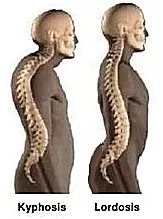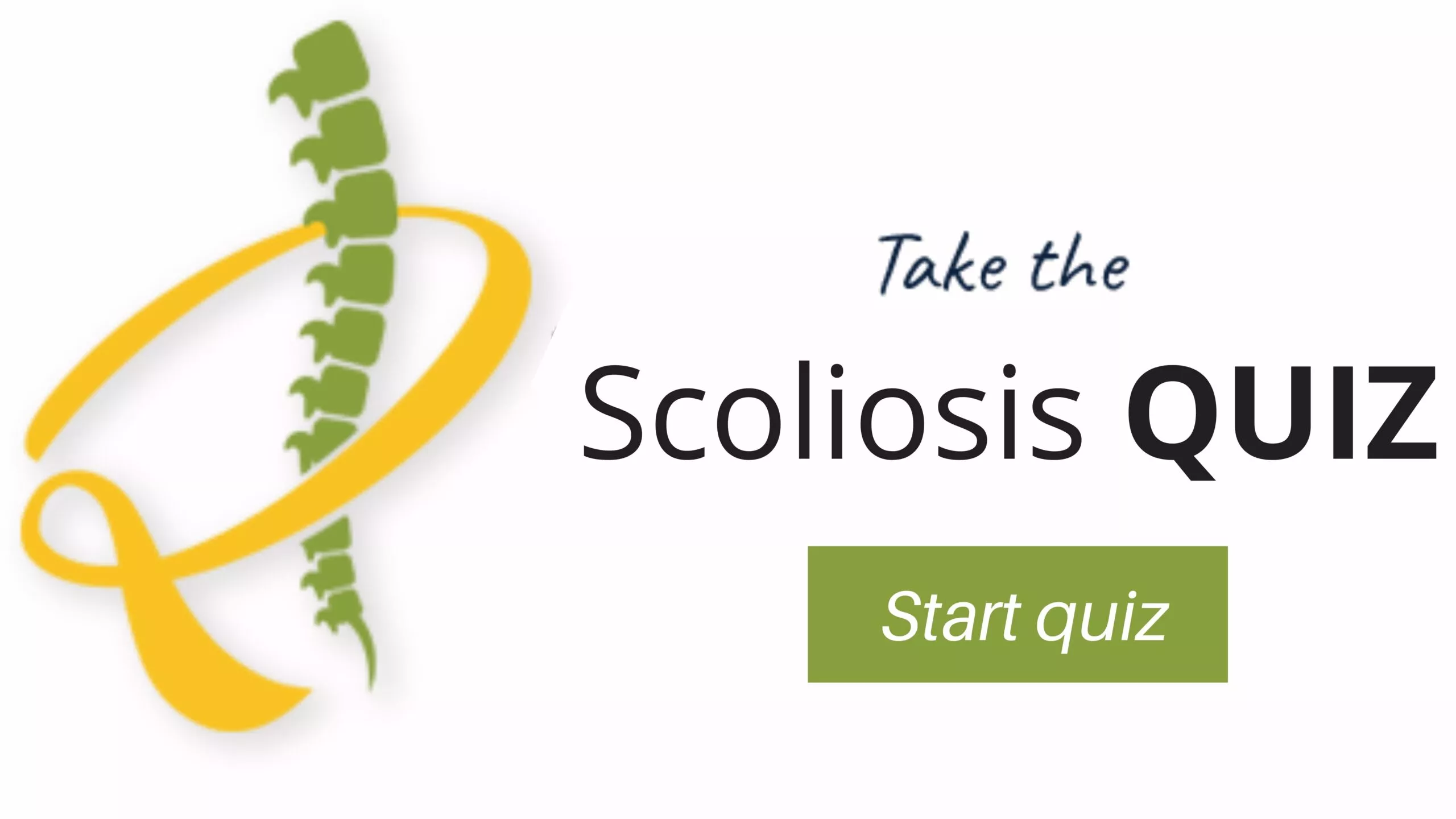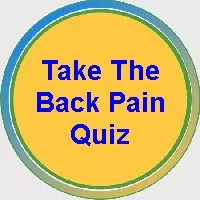
KYPHOSIS VS. LORDOSIS
Kyphosis and lordosis are the natural curves of your spine, but when exaggerated, they cause different medical well being issues. As an example, a kyphosis condition appears as a rounded “C” shape in your upper back, like a hunch. Meanwhile, lordosis is an inward “C” curve in your lower back, creating a sway. Significant kyphosis can lead to neck pain, poor posture, and breathing problems, while excessive lordosis can strain the lower back and cause tightness in the hamstrings.
3 percent of individuals with progressive curvature may eventually experience severe problems that can include scoliosis and back pain, spinal problems, and nerve compression causing numbness, weakness, and leg pain.
Kyphosis vs. Lordosis: Understanding Spinal Curvatures
 Altogether, the human spine is a marvel of engineering, providing structural support while allowing for flexibility and movement. As a result, two common spinal curvatures, kyphosis, and lordosis, play integral roles in maintaining a healthy and functional spine. In this comprehensive document, we delve into the definitions, causes, characteristics, diagnostic methods, treatment options, and preventive measures associated with kyphosis and lordosis. By exploring these spinal conditions in-depth, we aim to provide readers with the ultimate resource for understanding the complexities of kyphosis and lordosis.
Altogether, the human spine is a marvel of engineering, providing structural support while allowing for flexibility and movement. As a result, two common spinal curvatures, kyphosis, and lordosis, play integral roles in maintaining a healthy and functional spine. In this comprehensive document, we delve into the definitions, causes, characteristics, diagnostic methods, treatment options, and preventive measures associated with kyphosis and lordosis. By exploring these spinal conditions in-depth, we aim to provide readers with the ultimate resource for understanding the complexities of kyphosis and lordosis.
Definitions:
During discussions or writings, doctors will sometimes use the terms kyphotic and lordotic. These terms refer to the direction of spinal curves. For example, kyphotic curves relate to kyphosis and exhibit an outward or backward curvature, typically seen in the upper back, leading to a rounded appearance. Lordotic curves, on the other hand, refer to Lordosis and involve an inward or forward curvature, often observed in the lower back, creating a swayback appearance. In order to distinguish between them, a healthcare professional assesses the direction and location of the curvature through physical examination and imaging studies.
Kyphosis vs. Lordosis Causes:
Kyphosis:
- Poor Posture: Slouching or maintaining a rounded back posture over time.
- Osteoporosis: Weakening of the bones, often seen in elderly individuals.
- Scheuermann’s Disease: A condition affecting the discs in the thoracic spine, leading to abnormal curvature.
- Congenital Factors: Present from birth due to vertebral abnormalities.
Lordosis:
- Obesity: Excess weight can shift the body’s center of gravity, leading to increased lumbar curvature.
- Pregnancy: The extra weight and altered posture during pregnancy can contribute to lordosis.
- Spondylolisthesis: Due to forward slippage of one vertebra over another.
- Muscle Imbalance: Weak abdominal muscles and tight hip flexors can contribute to increased lumbar curvature.
Questions and Answers
What is the main difference between Kyphosis and Lordosis, and how can I identify which one I may have?
Kyphosis and Lordosis refer to distinct types of spinal curvatures. For instance, a kyphosis condition involves an outward rounding of the upper back, creating a hunched appearance. However, lordosis, on the other hand, is an inward curvature, often observed in the lower back, creating a swayback appearance. Importantly, a doctor can identify the specific curvature through a physical examination and imaging studies, determining whether the spine exhibits a forward rounding (kyphosis) or an increased inward curve (lordosis).
What are the common causes of Kyphosis and Lordosis, and are they preventable?
Kyphosis can result from poor posture, osteoporosis, Scheuermann’s disease, or congenital factors. Comparatively, lordosis may be caused by obesity, pregnancy, spondylolisthesis, or muscle imbalances. While some factors, like congenital conditions, may not be preventable, maintaining good posture, engaging in regular exercise to strengthen core muscles, and managing weight can help prevent or mitigate both kyphosis and lordosis. Furthermore, early intervention with proper lifestyle measures can contribute to spinal health.
Are their treatment options available for Kyphosis and Lordosis, and how effective are they?
Characteristics:
Kyphosis:
- Rounded Back: The main visual characteristic is a forward rounding of the upper back.
- Stiffness: Limited flexibility in the thoracic spine.
- Back Pain: Discomfort or pain in the upper back region.
Lordosis:
- Swayback Appearance: Increased inward curvature, especially in the lumbar region.
- Tight Muscles: Tightness in the lower back and hip flexor muscles.
- Leg Weakness: In severe cases, nerve compression can lead to weakness in the legs.
Diagnostic Methods:
Kyphosis:
- Physical Examination: Visual assessment of the curvature and evaluation of flexibility.
- X-rays: Imaging studies to visualize the extent and nature of the kyphotic curve.
- MRI or CT Scans: Additional imaging to assess spinal cord or nerve involvement.
Lordosis:
- Physical Examination: Observation of posture and alignment.
- X-rays: Imaging to measure the degree of lordotic curvature.
- Neurological Evaluation: In cases of nerve compression, assessing nerve function.
Treatment Options:
Kyphosis:
- Physical Therapy: At first, doctors may recommend exercises to improve posture and strengthen supporting muscles.
- Bracing: In adolescents with structural kyphosis, bracing may be recommended.
- Surgery: In severe cases or if neurological symptoms are present, doctors may recommend surgery.
Lordosis:
- Physical Therapy: Core-strengthening exercises to balance muscle tone.
- Weight Management: Addressing obesity to reduce excess lumbar curvature.
- Surgery: Rarely required, typically for cases of severe deformity.
Preventive Measures:
Kyphosis:
- Maintain Good Posture: Regularly practice proper posture, especially when sitting or standing.
- Exercise: Engage in activities that promote spinal flexibility and strength.
- Bone Health: Ensure adequate calcium and vitamin D intake for bone strength.
Lordosis:
- Core Strengthening: Focus on exercises that strengthen the abdominal and lower back muscles.
- Weight Management: Maintain a healthy weight to prevent excessive lumbar curvature.
- Ergonomics: Pay attention to workplace ergonomics to promote good posture.
Conclusion:
In conclusion, understanding kyphosis and lordosis is vital for anyone interested in spinal health. For example, both conditions can significantly impact the quality of life, but with early detection, appropriate intervention, and preventive measures, individuals can maintain a healthy and functional spine. Thus, this document serves as the ultimate resource for those seeking comprehensive insights into kyphosis and lordosis, empowering individuals to make informed decisions about their spinal health. For personalized advice and treatment, consulting healthcare professionals, such as those at the Southwest Scoliosis and Spine Institute, with offices in Dallas, Plano, and Frisco, Texas, can ensure tailored care and optimal outcomes.
___________________
MedicineNet: Kyphosis vs. Lordosis – Differences & Similarities
We’re here to help STOP THE PAIN
If you are an adult living with scoliosis or have a child with this condition and need a doctor who specializes in orthopedic surgery,
call the Southwest Scoliosis and Spine Institute at 214-556-0555 to make an appointment today.


